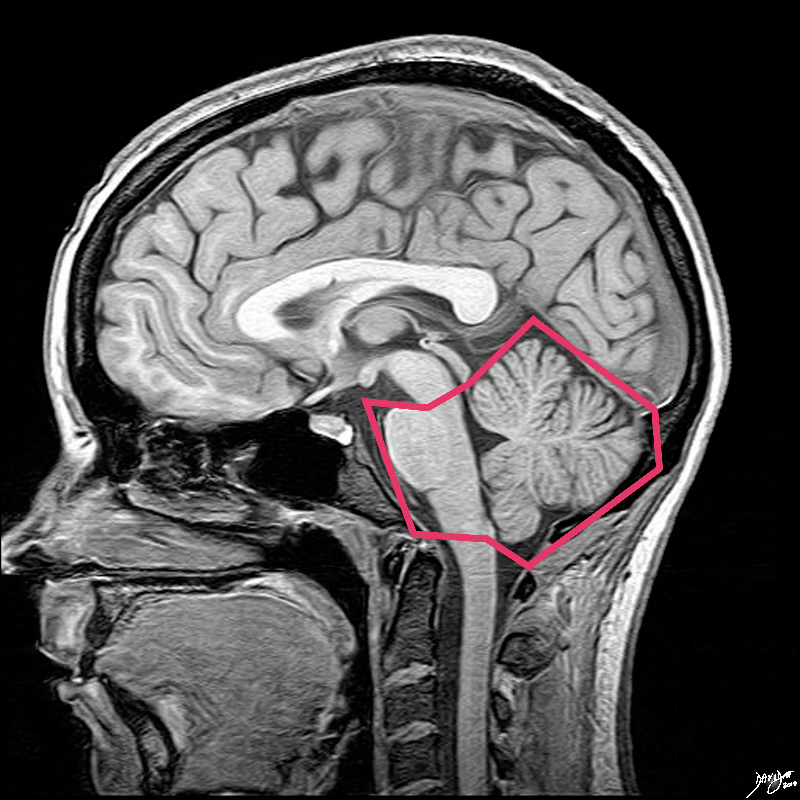Hindbrain – Sagittal View – Concepts
The Common Vein
Copyright 2010
Introduction
The hindbrain consists of 3 major structures; the pons, the medulla and the cerebellum
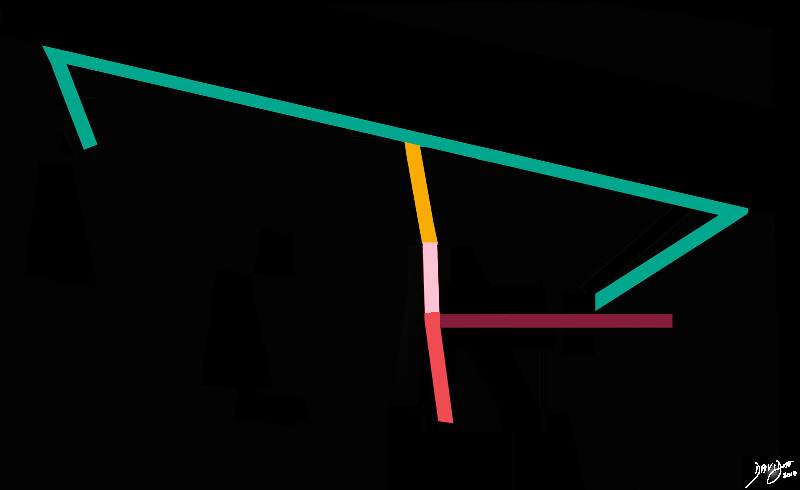
The Hindbrain Stick Diagram |
|
The hindbrain consists of 3 major components;the pons (light pink, the medulla, (salmon) and the cerebellum (maroon) Courtesy Ashley DAvidoff MD copyright 2010 93887b03ab03.8s |
|
The Hindbrain |
|
The hindbrain in the sagital plane is bordered in salmon pink and consists of the pons, the medulla, and the cerebellum Image Courtesy Philips Medical Systems Rendered by Ashley Davidoff MD Copyright 2010 92141.3ka.8s |
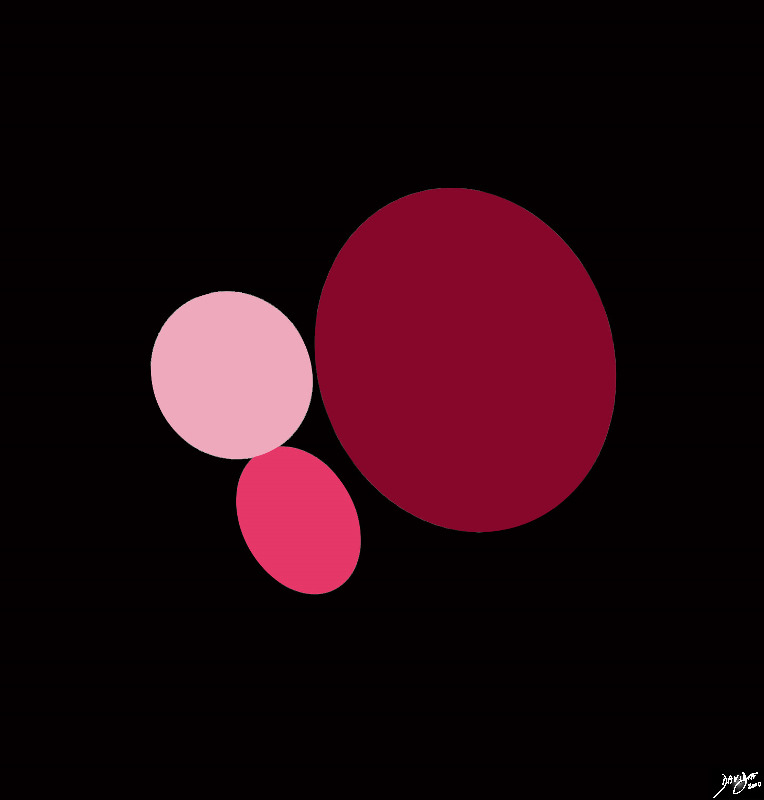
Conceptual Framework of the Hindbrain |
|
The hindbrain conceptually consists of 3 ovoids The pons is anterior and superior (light pink), the medulla is smaller and is anterior and inferior, and the cerebellum is the largest and is posterior. Courtesy Ashley Davidoff MD Copyright 2010 all rights reserved 92141.3kd03b03b01.8s |
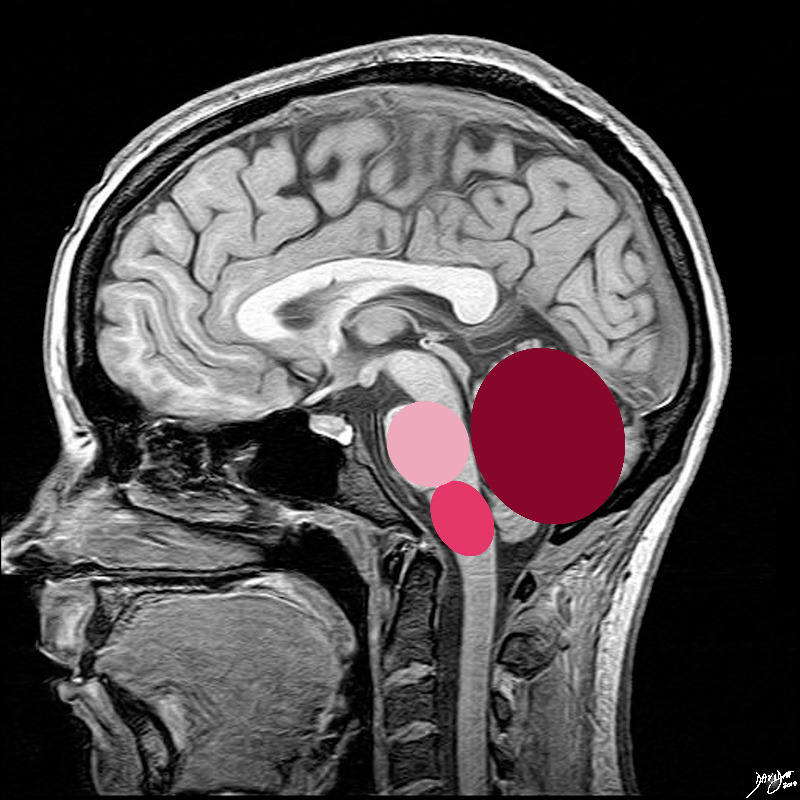
The Concept In Vivo |
|
The 3 ovoids are situated in the posterior cranial fossa the pons is anterior and superior (light pink), the medulla is smaller and is anterior and inferior, and the cerebellum is the largest and is posterior. Courtesy Ashley Davidoff MD Copyright 2010 all rights reserved 92141.3kd03b03b.8s |
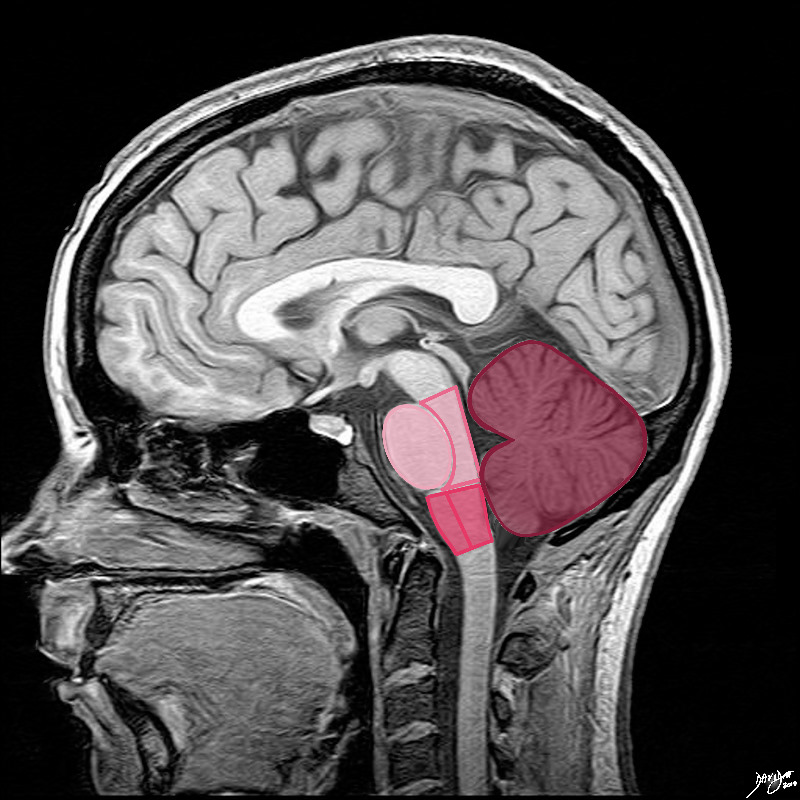
Advancing the Parts of the Midbrain |
|
The shapes in fact are not quite ovoid. The pons (lightest pink) has shapes reminiscent of an oversize egg lying in a small bed The anterior eggshaped portion is called the ventral or anterior pons and the posterior portion called the tegmentum which is a continuation of the tegmentum of the midbrain. The medulla oblongata is almost rectangular but has a subtle forward bulging to its anterior surface. The anterior portion is called the ventral or anterior medulla and the posterior portion is called the tegmentum,similar in name a nad a continuation of th etegmentum of the midbrain and pons The cerebellum is situated posteriorly, is the largest of the three major components and it consists of two hemispheres and a central vermis better appreciated in the axial plane. Courtesy Ashley Davidoff MD Copyright 2010 all rights reserved 92141.3kd03b04b.8s |

